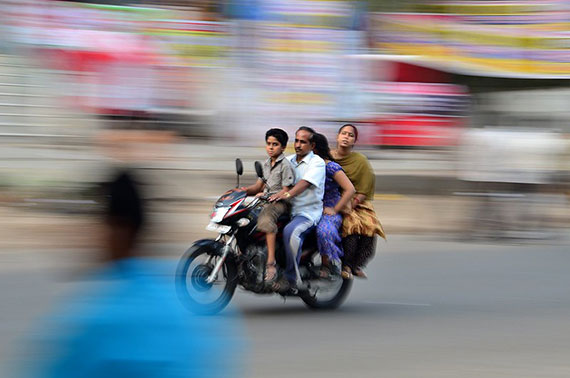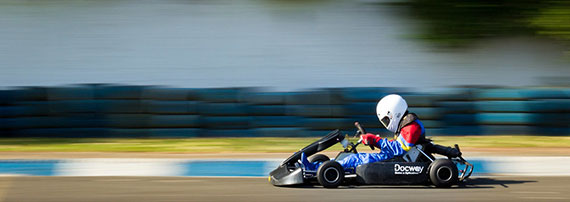Have you ever wanted to capture great action photographs but always seem to come up with mediocre images? Want to know how to pan properly? Well, here is how you do it.

Photo by Frank Starmer; ISO 200, f/13.0, 1/10-second exposure.
Slow shutter speeds are great for blurring moving objects. They are not, however, that good if you want to keep the subject sharp whilst blurring the background simultaneously. The solution is quite simple.
Take your camera off the tripod and attempt to follow the movement of the subject with the camera whilst keeping the subject in the same position in the viewfinder during the exposure. This panning technique works best when the movement is smooth from left to right, or from right to left, like in sports. The blurred background you acquire creates a greater sense of movement compared to a perfectly sharp image.
To get panning right takes some practice. You need to experiment with shutter speeds, but a rough guide is that fast moving subjects like cars need shutter speeds of around 1/125 second, and slow-moving subjects need shutter speeds of around an eighth of a second. To capture people cycling past on bikes you will need shutter speeds of around 1/60 second.
Quick Guide on How to Pan:
You need to practice until you can move your camera smoothly and consistently, whilst keeping the subject as sharp as possible.
- Put the camera in shutter-priority mode and set the shutter speed according to the speed of the subject.
- Set your camera’s autofocus mode to continuous mode so that it will try to keep the moving subject in focus all of the time. Try to keep the focus placed over the subject as you pan. When you start panning, attempt to frame the subject as soon as you can as it comes towards you, then follow it smoothly, moving left to right, or right to left.
- Track the subject whilst depressing half-way the shutter release. This will activate the autofocus.
- As soon as you are tracking the subject, smoothly fire the shutter. Keep following the subject after the shot has been taken to ensure that you maintain smoothness in your movement.

Photo by Rodrigo Tiepolo; ISO 100, f/16.0, 1/50-second exposure.
It is quite simple to get your panning right every time. It just needs practice, patience, and a strong desire to succeed.
About the Author:
Chris Smith is a photography expert and writer for an online magazine.
Like This Article?
Don't Miss The Next One!
Join over 100,000 photographers of all experience levels who receive our free photography tips and articles to stay current:






“It is quite to get your panning right” below the tram picture. Missing something? =) Feel free to delete comment after tixing.
What about image stabilization? Is it better to turn it ON or OFF?
When I have it, I will leave it ON. This will help keep my “stationary” subject sharp, but the panning will still get the blur we are after.